Getting the word out about your small business is no small feat, especially when time, money, and team members are in short supply. There are plenty of options, but what about content marketing?
Is successful content marketing on a small budget even possible?
Yes! But beware… Haphazard efforts could yield absolutely ZERO results and be a complete drain of your time and resources.
You don’t want your content to be a never-ending loop of “create, publish, and nothing.”
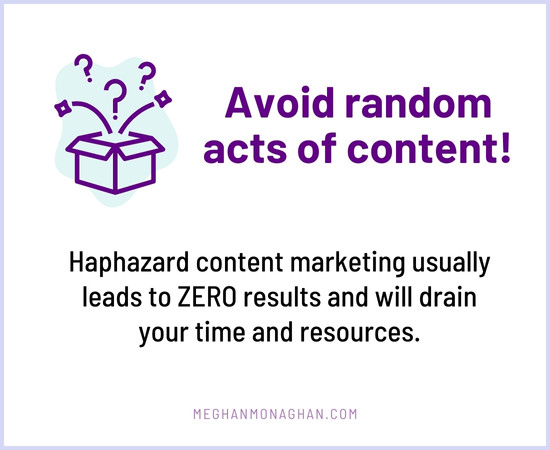
Content marketing can be an important business builder for B2Bs. But, how can you do content marketing with limited resources and still have great results?
By the end of this article, you’ll discover actionable, budget-friendly ways to achieve profitable content marketing that generates more leads and sales.
Ready? Let’s go!
What is Content Marketing?
You’ve heard the term “content marketing” bandied about, and the definition may not be all that clear. So, let’s have the Content Marketing Institute shed some clarity:
Content marketing is a strategic marketing approach focused on creating and distributing valuable, relevant, and consistent content to attract and retain a clearly defined audience — and, ultimately, to drive profitable customer action. Instead of pitching products or services, content marketing provides relevant and useful content to your prospects and customers to help them solve issues in their work (B2B content) or personal lives (B2C content).
Notice how the definition includes the reason you’re using content marketing in the first place: to drive profitable customer action. That’s why my goal is to help you achieve profitable, sustainable, and manageable content marketing as a small business owner.

And, when I say “content marketing,” I’m referring to Authority Content, meaning evergreen content like business blog posts, videos, and podcast episodes that boost your credibility and build trust with your audience.
Social media and email are often considered content marketing by experts. However, I categorize them under “distribution and promotion” since they are ways to get the word out about your Authority Content.
The benefits of content marketing are enduring and compound over time, unlike paid ads, which stop the second you cease funding them. A well-crafted piece of content can continue to attract and convert customers for years to come. #WINNING
That’s why it pays to invest in business blog posts, videos, and podcasts.
Think of content marketing as owning a home versus renting one. In the beginning, it might be painful, even more expensive than the alternatives. But over time, owning a home (or investing in content marketing) pays dividends. You build equity, value grows, and you enjoy long-lasting benefits that far outweigh the initial pains.
Here are some ways to achieve profitable content marketing on a limited budget.Click To TweetHow to Succeed at Effective, Profitable Content Marketing on a Small Budget
If you think you are alone in having a minimal budget for your content marketing, think again.
In a survey of 1,700 marketers and business owners, Semrush discovered that monthly budgets were on the lower end:
- 27% spend less than $1,000
- 19% spend $1,000-$3,000
- 20% spend $3,000-$5,000
- 17% spend $5,000-$10,000
- 10% said they spend $10,000-$20,000
- 6% said they spend over $20,000
That means 46% (nearly half) of businesses had a monthly budget of $3,000 or less!
With that in mind, here are some ways to make the most out of your budget, especially if you fall within that 46%.
1) Set Goals
Alright, so you’re pumped about diving into the world of content marketing. Fantastic! But before you start churning out blog posts or firing up that video camera, let’s pump the brakes for a second. Why?
Because without setting clear goals, you’re essentially setting sail without a destination. You might catch a breeze and move, but where are you headed? Sounds risky!
You don’t have the time or money to waste on content that doesn’t support your business. And that means you need to identify why you’re creating content in the first place. Understanding your “why” will guide your content strategy so that you create content that drives ROI versus haphazard content that results in nothing.
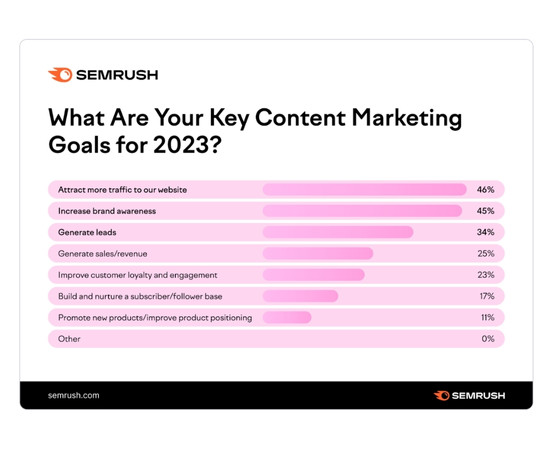
Goals give you direction, focus, and something to measure your success against.
Make sure that you set goals that are specific, measurable, and time-bound so that you can actually track your progress! Here are some examples of what you may want your content to achieve.
- Generate leads
- Build an email list
- Attract attendees to an annual event
- Drive more traffic to your website
- Increase inquiries through a contact form
Each of these goals is quantifiable. For instance, you can set a specific number of leads you want to generate or a deadline for building your email list. These metrics are “key performance indicators” that help you to keep track of your progress and measure your performance.
Goals set the stage for everything else in your content strategy. They inform your choice of content type, your target audience, and even how you’ll measure success.
So, before you go any further, jot down what you’re looking to achieve. This upfront planning will make the rest of your marketing journey smoother.
2) Understand Your Target Audience Better
Now that you’ve got your goals squared away, it’s time for the next crucial step: understanding your audience. Why?
You could create the most brilliant content, but if it doesn’t resonate with the people you’re trying to reach, you’ve essentially thrown time and money into the wind. And, neither are resources you can afford to waste.
When you understand who your audience is, what problems they face, and what they are searching for, you can create targeted content that solves their problems. This makes every piece of content you create more effective and, hence, more cost-efficient.

You’ll be creating content with purpose and direction, which translates to meeting your goals, supporting your business, and better ROI.
So, spend some time creating a buyer persona, which is a detailed profile of your ideal customer. Once you have a basic understanding of your buyer persona, apply it to your content creation to:
- Tailor your messaging so that your content speaks directly to the persona’s needs, fears, and desires.
- Choose the right content format(s) based on what your target audience prefers and where they spend most of their time online.
- Align your persona’s wants with your business offerings through pieces of content that connect the two.
Hubspot found that:
- targeted personas increase the number of qualified leads by 124% compared to non-targeted campaigns.
- conversion rates were 73% higher for businesses that used targeted personas compared to those that did not.
And there you go! Understanding your audience is the cornerstone of effective content marketing on a small budget. It’s all about smart planning and strategy.
3) Choose the Right Content Format
Choosing the right content format is like choosing the right kitchen utensil. You wouldn’t use a butter knife to cut open a pumpkin! You want the right tool for the job…or, in this case, the right format to attract your ideal customer!
The content format you pick should not only align with your budget but also be the most effective in reaching your target audience.
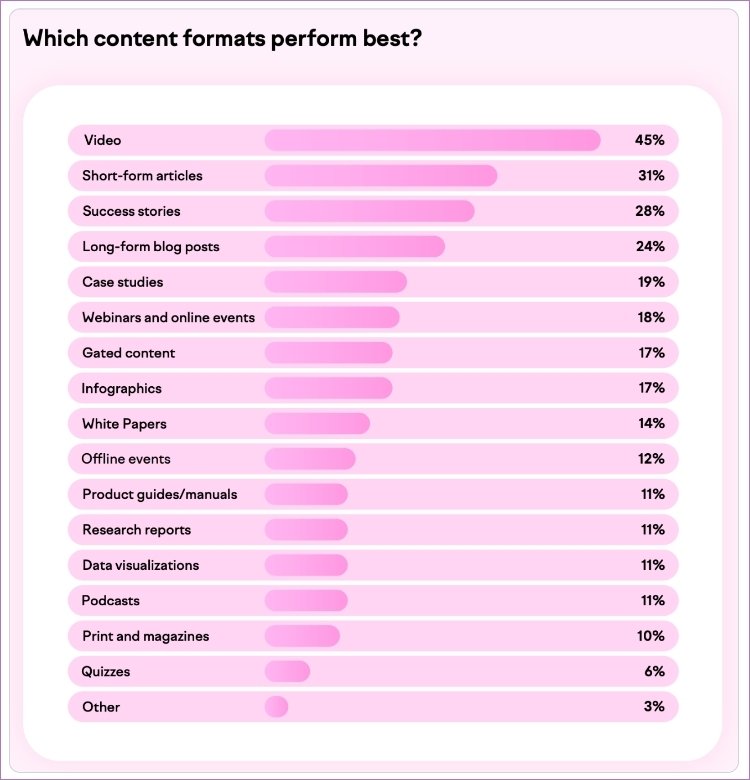
For instance, videos might be all the rage, but if your audience prefers reading in-depth articles, you could be wasting valuable resources.
Or, in the case of podcasts, adults aged 18–29 and 30-49 listen to podcasts more frequently than older age groups, which means you may not want to invest in one if your target audience is over 60.
Further proof of why it’s important to know your audience and choose your content format wisely. You don’t want to spend resources on content that has less chance of delivering a good ROI.
There are numerous content formats out there, but let’s focus on the three that can offer a reliable ROI when you’re doing content marketing on a small budget:
- blog/website
- video (aka vlog), and
- podcast.
All three formats are available to your audience around the clock to generate leads and sales 24×7. And, they all build your authority, credibility, trust, and brand.
Plus, a blog, vlog, or a podcast can attract sponsorships and ad revenue, which is a nice bonus perk! You could offset some of your marketing expenses or even make your content marketing a source of revenue.
Here’s a little more about each content format:
Blog/Website Content
A blog on your website is a terrific option for content marketing on a small budget. It’s affordable, fantastic for search engine optimization, great for lead generation, and versatile since posts make the perfect scripts for videos and podcasts. Blog posts can generate text for your emails, social media posts, and even online courses!
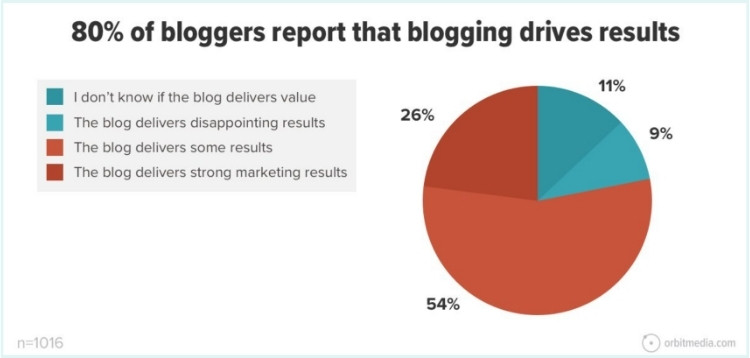
If you’re not too tech savvy, a blog can be easy to update and maintain.
Blogging has been around for a long time, but it’s not dead! How do you think people discover you online? Sure, they may find you on social media. However, most people begin their purchase decisions with an online search. If you have a blog, they are more likely to find your business online!
Video Content
Video is probably the most popular and effective content format since it’s more personal and very engaging. They give your target audience a chance to hear your voice, see your face, and feel a more emotional connection. And, they’re incredibly persuasive. In fact, 89% of people say watching a video has convinced them to make a purchase!
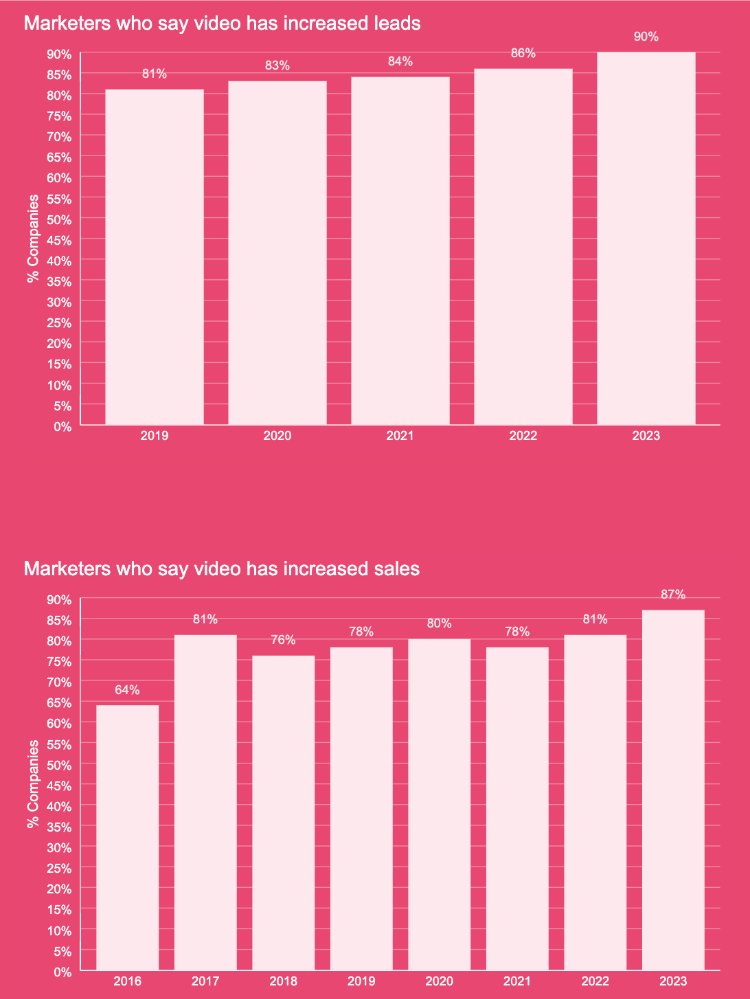
Although videos can take more technical expertise, you can take advantage of live video from your computer or smartphone. This means that you don’t have to know how to edit videos to get started.
But, if you do prefer to record videos versus going live, today’s AI tools can help with some video editing tasks.
You can repurpose video content into blogs, podcast episodes, and social media snippets.
Note that video often requires more time and planning than other formats.
Podcast Content
Probably the least saturated content format out of the three, podcasting is a good option, although it can be slow going to grow a community.
Podcasting has low startup costs. All you need is a good microphone, some free software, and you’re set. This is especially true if you speak well off the cuff because then you don’t need to edit.
People are busy today and overwhelmed by all of the content available to them. A podcast is easy to consume on the go and via smart devices like the Amazon Echo. People can multitask while enjoying a podcast. So, that makes podcasts a good option if your target audience listens to them.

Although not as engaging as video, podcasts are still more intimate than blogs since people can hear your voice, which makes it feel more like a conversation. And, the format is good for thought leadership as well as networking. As usual, it depends on your content and business goals as well as your audience.
My opinion: after over 100 episodes of The Messy Desk Podcast, I recommend that you choose blog or video content, which can easily be turned into a podcast. The graph above shows that podcasting was one of the lower performing formats!
Note: Although social media posts and emails are often considered content marketing, they aren’t the same as a blog, vlog, or podcast. The latter three exist as authoritative hubs where your main content has a home. Emails and social media posts are more fleeting and are a good way to get people to your blog, vlog, or podcast content.
4) Create More Effective Content
One of the most important ways to do content marketing on a small budget is to create more content that attracts qualified leads and helps convert them into paying customers. And, while you’re at it, you may as well save money and time with content creation.
Here are some of my best tips.
Come Up with Winning Content Topics
Many small businesses focus on the wrong content topics, which attract the wrong target audience or doesn’t align with their offers. So, make sure to come up with a simple content strategy and create a content calendar. This will set you up for success with your content so that you don’t waste time or money.

Always do content research first! This way, your can create content that aligns with what your audience wants and outshines the competition. Haphazard content is neither effective nor profitable.
Always Have a Goal and a CTA
In 99% of your content, you should have a business goal for each content topic and a call-to-action that moves people from your website, video, or podcast to your email list or to take action of some sort.

For example, the business goal of an article about why coaching improves results may be to convince the person to schedule a free consultation call.
Having a content goal guides your content creation while offering a call to action supports your business in generating leads and sales.
Focus on Evergreen Content
Create content that remains relevant and valuable over time. Evergreen content can continue to attract traffic and generate leads long after it is published, providing a long-term return on investment.
That’s why blogs, videos, and podcasts are better at building your authority and generating leads long after they get published!
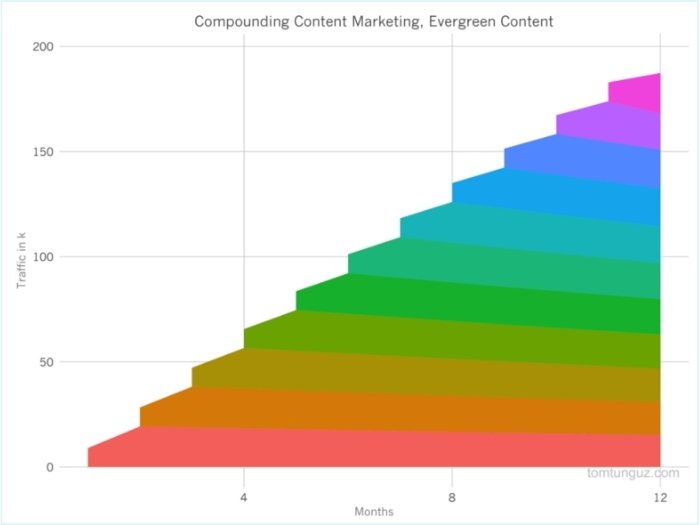
While you can use social media to gain brand awareness and foster trust, you aren’t building content that’s effective over the long term. So, put your energy into the content that pays you back over time.
Repurpose Like a Pro
Some marketers disagree, but I am a believer in repurposing your existing content. Got a high-converting or popular blog post? Take snippets from it and turn them into social media updates, create an infographic, or even turn it into a podcast episode.
The more mileage you can get out of a single piece of content, the higher your ROI.
This is a terrific solution for solo entrepreneurs or small teams who are DIYing their content marketing. And that’s why I disagree with those experts who don’t appreciate the functionality and versatility of repurposing. It allows small teams to keep up with bigger brands!
Plan Ahead
Time is money, especially when you’re a small business owner wearing multiple hats. Plan ahead so that you can spread out your content creation over days, which will help keep you consistent.
A content strategy with a content calendar usually improves the effectiveness of your content and makes planning ahead possible.
The calendar forces you to select your content topics in advance, which will save you time. Put it all on your weekly scheduling calendar so that your content marketing tasks are easier to manage.

Consistency is one of the toughest aspects of content marketing. Planning ahead and planning your time will make it less likely to squash your momentum with excuses.
Plus, content planning can also help in cohesiveness. One piece of content can tie into another, creating a more compelling narrative or customer journey, which will boost your content’s profitability over the long run.
Do Something Different (If You Want)
Marketing trends are always changing. So, don’t get discouraged if something that’s popular now doesn’t jive with what you’d like to do. Embrace your different!
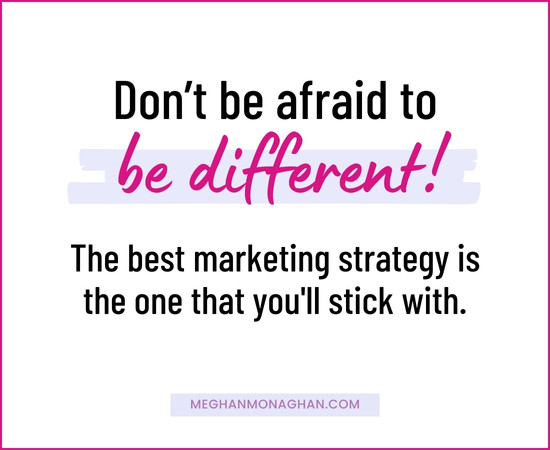
For example, long-form content is great for SEO, but it’s a lot of commitment. Don’t be afraid to do what works for you. If shorter blog posts around 1,000 words are what you can fit into your marketing routine, then give it a go. It’s better to do what works for you than try to force yourself into tactics that you can’t keep up with.
The best marketing strategy is the one that you’ll stick with. If the trending strategies don’t suit you, you’re unlikely to implement them effectively.
5) Promote Your Content
You’ve crafted that awesome piece of content. Now you need eyeballs on it, right? Having content that no one sees is like hosting a rock concert with no audience! Simply put, it’s a wasted opportunity that won’t help bring in the profits.
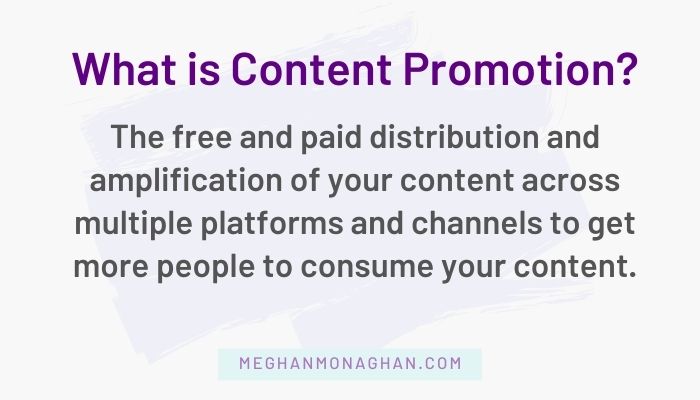
In a world drowning in content, visibility is a big hurdle. Let’s break down how you can smartly distribute and promote your content, even on a shoestring budget.
The Role of Social Media
Here’s where social media and email come into play. Think of these platforms as your content’s personal chauffeurs, driving your masterpiece straight to the VIP section—right in front of your target audience.
Use social media to share blog posts, video snippets, or key takeaways from your podcasts to engage your audience. Much of the content you share on social media will not be seen by every follower unless you pay for visibility. However, social platforms are still important for distributing content and driving traffic to your main content hub(s).
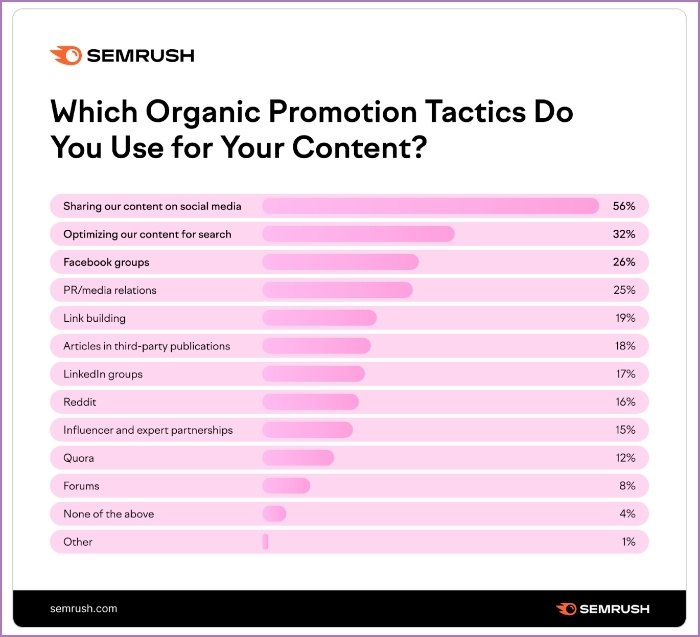
The beauty here is that if your content truly resonates, your followers will do some of the legwork for you by sharing it. So, you’re not just reaching your audience but also their networks.
To automate scheduling, platforms like MissingLettr can create posts for you with AI, which is a dream come true. And, they have a free plan!
The Role of Email
Even better and more reliable than social media is your email list! Unlike the more unpredictable algorithms of social media platforms, your email list is something you control and own. It’s one of your biggest assets!
In fact, according to HubSpot, email generates $38 for every $1 spent, boasting an astounding 3,800% ROI.
Now, if social media is the casual get-together, consider email as the intimate dinner party with your closest friends. You’ve got a captured audience that has opted-in to hear from you.
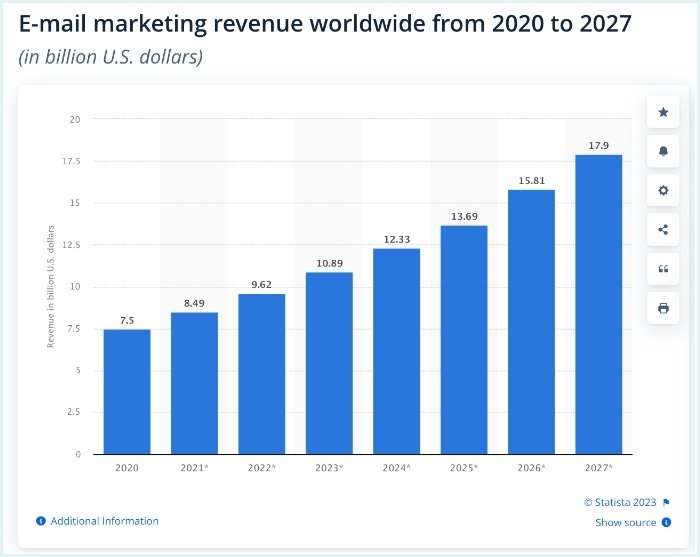
Send emails featuring your latest blog posts, video releases, or podcast episodes. The trick is to provide enough value in the email so that your reader is compelled to click through to your main content hub, be it your blog, YouTube channel, or podcast platform.
There are plenty of good yet affordable email marketing platforms too. I love and use MailerLite for my email. It’s easy to use and feature-rich enough for a small business on a budget. There’s also Beehiiv which offers some cool options and seems popular these days.
The Outsourcing Option
Very little in business is so-called “free.” As a business owner, your time is money. If you find that you’re spending too much time distributing content and not enough time running your business, it might be cost-effective to outsource this task.
Virtual assistants or specialized content promotion agencies can take this burden off your plate. Yes, it’s an expense. But, if it frees you up to focus on revenue-generating activities, it’s money well spent.
Remember, this is an article about content marketing on a small budget…not advice about trying to DIY everything or spending zero dollars. If you’re running a business, you need a marketing budget, even if it’s a small one!
Collaborations and Partnerships
To help extend your reach while doing content marketing on a small budget, why not join forces with other brands, influencers, or colleagues in your niche? You can access an entirely new yet relevant audience without the cost of paid advertising.

Here are a few ideas:
- Write guest blog on each other’s sites
- Do joint podcasts or video collaborations
- Share content via email with each other’s lists
This is another effective, affordable method for getting your content and your brand in front of others. And, when you bring in another expert or another angle, your content itself becomes more robust and appealing to audiences.
Just make sure that you collaborate or partner with people whose communities are part of your target audience!
The Bottom Line: Visibility Equals Profitability
Remember this mantra: content is most powerful when it’s consumed by your target audience. With smart distribution, even marketers on a budget can make a splash.
Check out this episode for how to fit content promotion into your schedule:
6) Monitor and Measure: Don’t Fly Blind!
What’s the point of pinching pennies and investing your hard-earned time if you don’t know what’s actually working? Tracking your content’s performance is another way to keep costs down when you’re doing content marketing on a small budget.
Remember when you set goals? Well, make sure that you set a way to track and measure those goals. Think of KPIs as the vital signs of your content marketing campaign. They’re the pulse, temperature, and blood pressure, letting you know if your marketing is healthy or needs a bit of TLC.

Basic KPIs include metrics like:
- website traffic
- lead magnet downloads/sign ups
- email subscribers
- engagement rates
- conversion rates.
Most platforms offer free or inexpensive software to keep tabs on these KPIs.
For your website, there’s Google Analytics. Although it is a powerful, free tool, it’s not that user friendly. So, you may want to hire someone to set it up for you and spend an hour training you or a team member on that set up.
Social media and email marketing platforms offer built-in analytics that are user-friendly. You’ll get a snapshot of who’s engaging with your content and the best times to post or send emails.
Set aside some time (at least once a month) to review your content’s performance. Assess what’s working and what’s not. Tweak accordingly so that you’re not wasting money or time on what’s not performing well.
Let the metrics guide you! Minor adjustments can sometimes yield major results. Be prepared to adapt, and above all, remember: Data don’t lie. Make it your ally in crafting a budget-friendly yet impactful content strategy.
7) Maximize Your Impact, Minimize Your Spend with SEO
If you could reach more people online without investing in paid ads, would you want to? Of course you would!
That’s what’s so fantastic about Search Engine Optimization, or SEO. When you do the right things with your Authority Content, people discover it online for years to come.
After all, when people need information, a product, or a service, where do they go? They go online and typically do a search. Google alone processes over billions of searches per day.
And guess what? Each one of those searches is a potential touchpoint with a customer.

The Right Content Topics are Essential
Content and SEO go hand in hand these days. After all, search engines use your content to understand the topic you’re addressing. Then these algorithms pair your content up with people who are looking for that topic.
As you can imagine, if you choose a content topic—or keyword phrase—that doesn’t align with your business offers or your target audience doesn’t care about, then you’ll waste time and money attracting the wrong people.
That’s why it’s important to your content’s long-term success to use relevant keywords in your blog, videos, and podcast. These are the terms or topics people are likely to use when searching for information in your industry or niche. But that’s not all!
Don’t overlook “search intent” when selecting your keywords. What’s the motivation behind a person’s search query? Are they just gathering information, or are they looking for a specific solution that you provide?
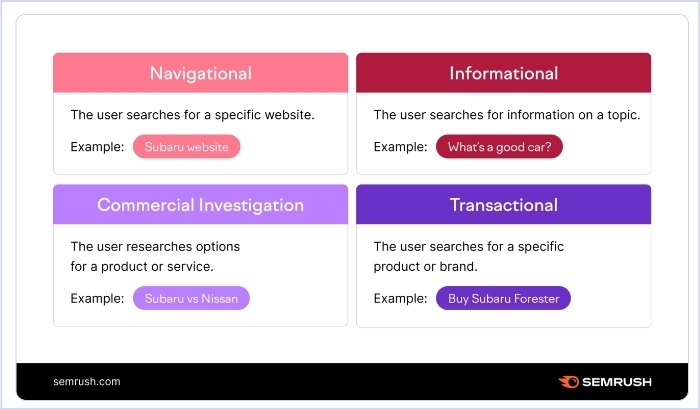
By targeting keywords that align with a searcher’s intent to find solutions, you can zero in on a more qualified audience (e.g. those who are more likely to take action or make a purchase).
The magic of this is that it allows you to maximize your budget. Each piece of keyword-rich content you create becomes a long-term asset that lives online, attracting potential leads day after day, 24×7.
Google Isn’t the Only Game in Town
While Google may be the king of search, let’s not forget about other platforms that function as search engines.
YouTube is the second-largest search engine in the world. Platforms like Pinterest also act like visual search engines where users look for inspiration, products, or how-to guides. And, people also search on podcast platforms.

So, optimize your titles and descriptions to attract interested people and drive free, organic traffic to your website.
Prioritize SEO for Better Lead Generation and Visibility
There’s way too much to cover about SEO for this article. But the takeaway is that when you understand the mechanics of SEO, you unlock a powerful tool for making the most of your content marketing budget. It’s like investing in a stock that pays dividends.
The initial effort you put into SEO can yield an ongoing return, making your budget stretch further to drive more consistent, quality traffic to your content over the long term. SEO means more leverage and bigger payoffs from optimized blog posts, videos, and podcast episodes, which is important when you need to maximize every dollar spent.
8) Utilize Processes, Systems, and Templates
One of the ways I’ve been able to manage my own content marketing on a small budget is to embrace processes, systems, and templates. Game changer!
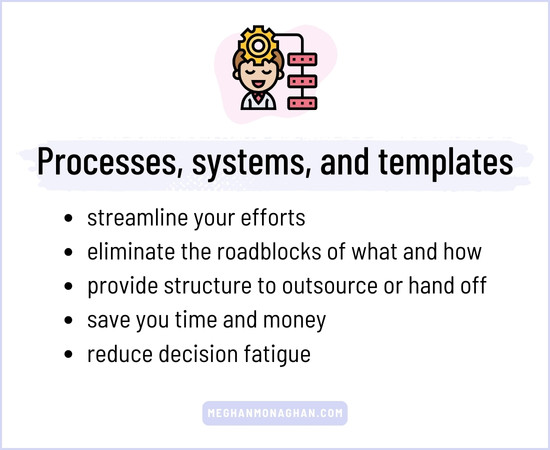
This powerful trio makes content marketing feasible for you since you’re juggling multiple balls at one time. Together, they:
- streamline your efforts
- eliminate the roadblocks of what to do and how
- save you time and money
- provide structure to outsource or hand off
- reduce decision fatigue since the decisions are made!
The end result? Less barriers to getting tasks off the to-do list and a greater likelihood that you’ll achieve manageable, sustainable content marketing.
Processes
Processes are the series of steps or actions needed to complete a task or goal.
For instance, after writing a blog post, what comes next? Maybe you need to:
- edit it
- upload it to WordPress,
- format it,
- create and add images, and
- optimize the post for SEO.
You can turn that into a step-by-step process that you can follow or hand off to another person. When you have a process in place, you’re never left wondering, “What’s next?”
Pssst…here are some tips for squeezing all of those tasks into your already-jam-packed schedule!
Systems
The systems in your business are the collection of processes that work together to achieve a common goal or set of goals. You may also consider the tools, apps, and software as your systems.
For example, I have three separate processes for researching blog topics, writing a blog post, and publishing a blog post. Together, those processes make up my system for blogging.
But, for some, processes are systems and vice versa…and that’s okay. These terms are often interchangeable. The point is to come up with a procedure to get 
Templates
As part of my processes and systems, I use templates, which are pre-built, pre-designed, ready-to-go resources. Templates save you hours of time and eliminate the “blank page syndrome.”

You can use templates for blog posts, graphics, emails, social media, and AI prompts. They make a massive improvement in your marketing productivity!
I tend to think that processes, systems, and templates help you go from ‘busy’ to ‘efficient and effective.’
Here’s more about marketing templates from The Messy Desk Podcast:
When you’re short on time, money, and people, a few good processes, systems, and templates can be the difference between profitable content marketing and no content marketing!
Content Marketing on a Small Budget Requires the Basics
Sometimes you need to fall back on the basics of content marketing to get good results, whether you have a tiny budget or a big one.
Focus on the foundational principles of content strategy and planning, creation, and distribution to develop a simple plan that will yield good results. This is how small businesses can be successful at content marketing.
Content that aligns your business offers with the desires of your target audience doesn’t have to be mysterious! A strategy and calendar can do quite a bit to put you in the direction of profitable content marketing.
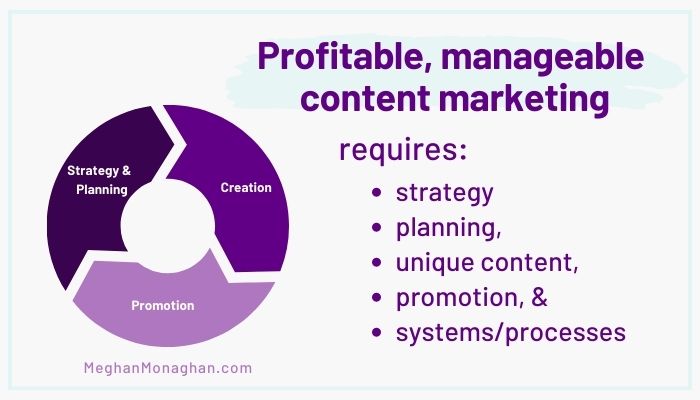
If you can only commit to limited content marketing, is it worth it? For example, is one video a month worth creating? Well, it depends on your goals. But, look at it from the perspective of your potential customer. If they could see only 10 videos from your business, that’s better than zero videos!
However, for content marketing to be most advantageous to your business growth, commit to consistent weekly publishing for at least six months. And have a plan! Create content that drives action so that you have a 24×7 lead generation system working for you.
And, if you need help or support, get it. There’s no good reason to do everything in your business yourself. Even if you can do it all, should you? No! Outsource some of the tasks. I’m here to help!
